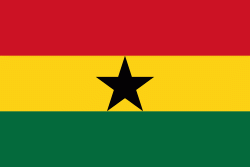Nkwanta South District (Nkwanta South)
Nkwanta South Municipal Assembly (Nkwanta Sud) is one of the eight districts in Oti Region, Ghana. Originally it was formerly part of the then-larger Nkwanta District on 10 March 1989, which was established by Legislative Instrument (L.I.) 1496, until the northern part of the district was split off to create Nkwanta North District on 29 February 2008, which was established by Legislative Instrument (L.I.) 1892; thus the remaining part has been renamed to become Nkwanta South District. However, on 14 November 2017 (effectively 15 March 2018), it was later elevated to municipal district assembly status to become Nkwanta South Municipal District; which was established by Legislative Instrument (L.I.) 2283. The municipality is located in the northern part of Oti Region and has Nkwanta as its capital town.
In addition to Nkwanta, the capital and administrative centre, Nkwanta South Municipality contains the following villages:
In addition to Nkwanta, the capital and administrative centre, Nkwanta South Municipality contains the following villages:
Map - Nkwanta South District (Nkwanta South)
Map
Country - Ghana
 |
 |
| Flag of Ghana | |
The Bono state existed in the area that is modern day Ghana during the 11th century. Kingdoms and empires such as Kingdom of Dagbon in the north and the Ashanti Empire in the south emerged over the centuries. Beginning in the 15th century, the Portuguese Empire, followed by other European powers, contested the area for trading rights, until the British ultimately established control of the coast by the 19th century. Following over a century of colonial resistance, the current borders of the country took shape, encompassing 4 separate British colonial territories: Gold Coast, Ashanti, the Northern Territories, and British Togoland. These were unified as an independent dominion within the Commonwealth of Nations. On 6th March 1957, Ghana became the first country in Sub-Saharan Africa to achieve sovereignty. Ghana subsequently became influential in decolonisation efforts and the Pan-African movement.
Currency / Language
| ISO | Currency | Symbol | Significant figures |
|---|---|---|---|
| GHS | Ghanaian cedi | ₵ | 2 |
| ISO | Language |
|---|---|
| AK | Akan language |
| EN | English language |
| EE | Ewe language |
| TW | Twi |















